
The Resilient Spirit of Hiroshima: The Atomic Bomb Dome
Explore the poignant history of the Atomic Bomb Dome, a UNESCO World Heritage Site and a powerful symbol of peace in Hiroshima.
The Atomic Bomb Dome, a UNESCO World Heritage Site, stands as a poignant reminder of Hiroshima's past and a symbol of peace. This iconic structure draws tourists with its haunting beauty and the moving stories it tells of resilience and hope.
A brief summary to Atomic Bomb Dome
- 1-10 Otemachi, Hiroshima, 1 Chome Otemachi, Naka Ward, Hiroshima, 730-0051, JP
- +8182-242-7831
- Visit website
- Monday 12 am-12 am
- Tuesday 12 am-12 am
- Wednesday 12 am-12 am
- Thursday 12 am-12 am
- Friday 12 am-12 am
- Saturday 12 am-12 am
- Sunday 12 am-12 am
Local tips
- Visit early in the morning or late afternoon to avoid crowds and experience the site in a peaceful atmosphere.
- Take a guided tour to gain deeper insights into the historical significance of the dome and its surrounding memorials.
- Don't forget your camera; the dome is especially striking at sunset when the light casts beautiful shadows.
- Combine your visit to the dome with a trip to the Hiroshima Peace Memorial Museum for a comprehensive understanding of the events of 1945.
- Respect the solemnity of the site by maintaining a quiet demeanor and being mindful of others who are there to reflect.
Getting There
-
Walking
If you are starting from Hiroshima Station, exit the station and head towards the main street, Heiwa Odori. Turn left and walk straight for about 15 minutes until you reach the intersection with Otemachi Street. Continue straight, crossing the river via the Aioi Bridge. After crossing, the Atomic Bomb Dome will be visible on your left side. Follow the path along the river to reach the dome area.
-
Tram
From Hiroshima Station, take the Hiroshima Electric Railway tram (Line 2 or Line 6) from the tram stop located near the station. Ride for about 10 minutes and get off at Genbaku Dome-mae Station. Once you exit the tram, the Atomic Bomb Dome will be directly in front of you. Just cross the street, and you can explore the site.
-
Bus
From Hiroshima Station, take the local bus (No. 24 or No. 29) from the bus terminal in front of the station. It will take about 15 minutes. Get off at the 'Genbaku Dome' bus stop. The Atomic Bomb Dome is a short walk from the bus stop; simply cross the street, and you will see the dome in front of you.
Discover more about Atomic Bomb Dome
Iconic landmarks you can’t miss
Hiroshima Prefectural Industrial Promotion Hall (Atomic Bomb Dome) Fountain Ruins
0.0 km
Discover the profound history of resilience at Hiroshima's Atomic Bomb Dome, a UNESCO World Heritage Site symbolizing peace and hope for future generations.
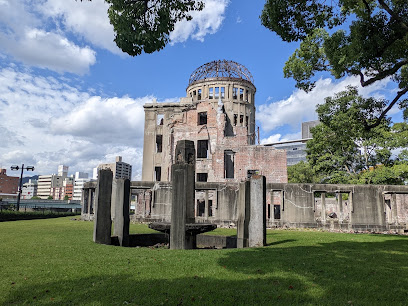
The Atom bomb struck Jizōson
0.1 km
Explore the Atom Bomb Struck Jizōson in Hiroshima, a poignant historical landmark symbolizing resilience, peace, and the enduring spirit of its people.
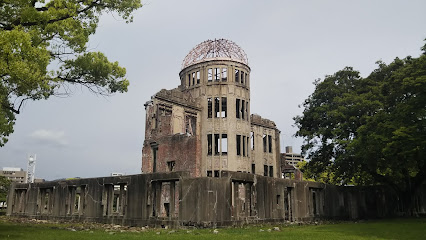
Memorial Tower Dedicated to Mobilized Students
0.1 km
Explore the Memorial Tower Dedicated to Mobilized Students in Hiroshima, a poignant tribute to youth lost during World War II and a symbol of resilience and peace.
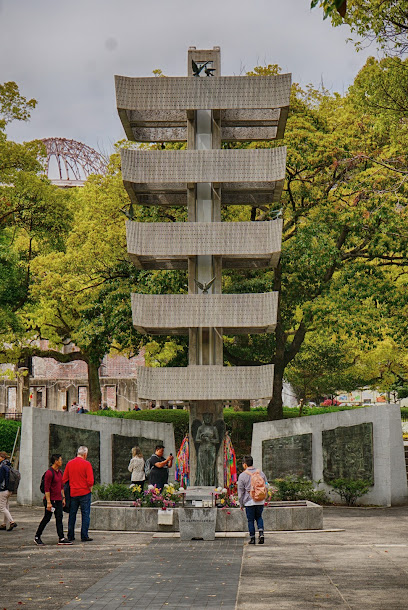
(公財)広島観光コンベンションビューロー 企画総務部・MICE推進部
0.1 km
Discover the Hiroshima Foundation for Peace, a beacon of hope and resilience dedicated to promoting peace and understanding through its impactful exhibitions.
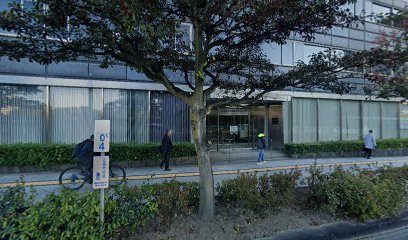
一般社団法人広島県観光連盟
0.1 km
Explore the heart of Hiroshima's culture at the Association of Hiroshima, a gateway to art, history, and community experiences.
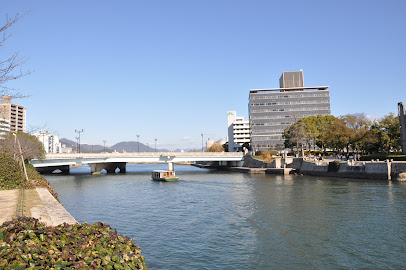
Hypocenter
0.1 km
Explore the Hypocenter of Hiroshima, a profound historical landmark symbolizing peace and resilience in the face of tragedy.
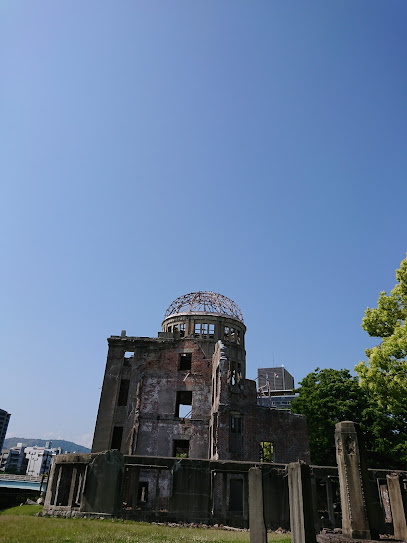
Hiroshima World Heritage River Cruise
0.2 km
Discover the historical beauty of Hiroshima from the water with the Hiroshima World Heritage River Cruise, a serene ferry experience through iconic landmarks.
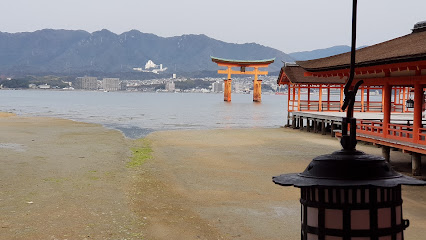
1-chōme-5-3 Ōtemachi
0.2 km
Explore the architectural wonder and cultural significance of Otemachi in Hiroshima, where modernity meets history in a vibrant urban landscape.
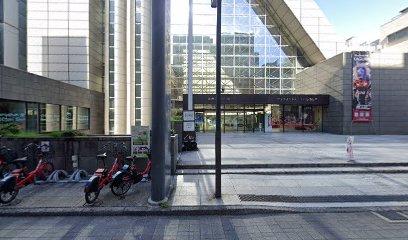
Pond of Peace
0.3 km
Discover the Pond of Peace in Hiroshima, a tranquil cultural landmark reflecting resilience and beauty amidst the city’s vibrant life.
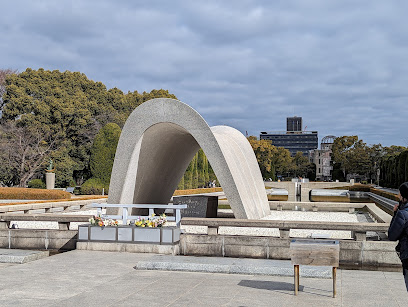
Former Hiroshima Branch of the Bank of Japan
0.5 km
Explore the Former Hiroshima Branch of the Bank of Japan, a historical landmark that embodies resilience and recovery in the heart of Hiroshima.
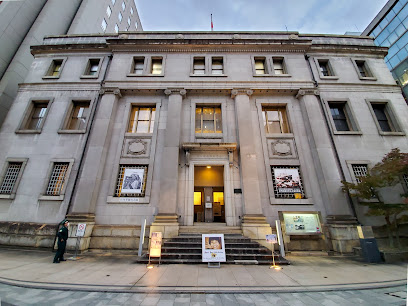
Gates of Peace
0.6 km
Explore the Gates of Peace in Hiroshima, a symbol of resilience and hope that invites reflection on the importance of harmony and understanding.
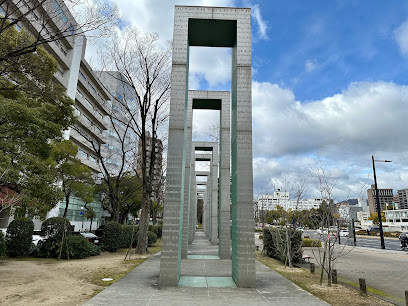
Hiroshima Municipal High School Atomic Bomb Cenotaph
0.6 km
Explore the Hiroshima Municipal High School Atomic Bomb Cenotaph, a poignant historical landmark that symbolizes resilience and hope in the heart of Hiroshima.
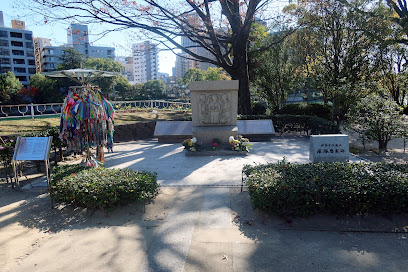
Peace Bridge
0.6 km
Discover the Peace Bridge in Hiroshima, a stunning architectural marvel symbolizing resilience, hope, and the city’s commitment to peace.
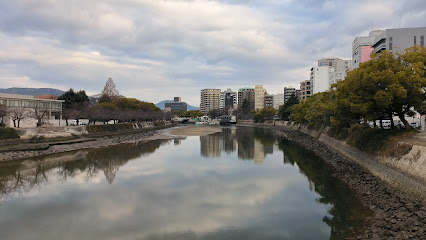
Nishiheiwao Bridge
0.6 km
Discover tranquility and breathtaking views at Nishiheiwao Bridge in Hiroshima, a must-visit destination for every traveler.
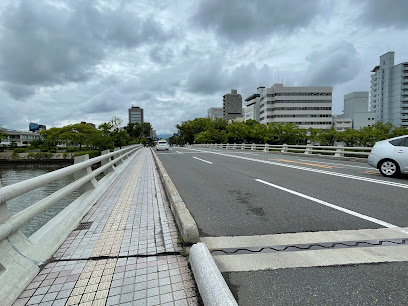
Shirakami-sha Shrine
0.6 km
Discover the tranquil Shirakami-sha Shrine in Hiroshima, a serene escape into Japan's spiritual heritage with picturesque landscapes and rich traditions.
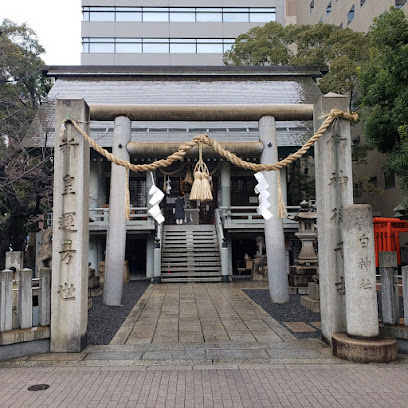
Unmissable attractions to see
Saikoji
0.1 km
Discover the serene beauty of Saikoji, a historic Buddhist temple in Hiroshima, where tranquility meets cultural heritage.
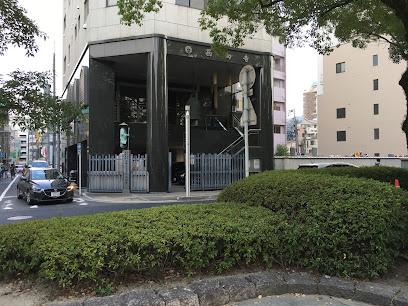
Hiroshima Prefectural Industrial Promotion Hall (Atomic Bomb Dome) Atomic bomb damage information board
0.1 km
Explore the profound legacy of the Atomic Bomb Dome in Hiroshima, a UNESCO World Heritage site symbolizing peace and resilience.
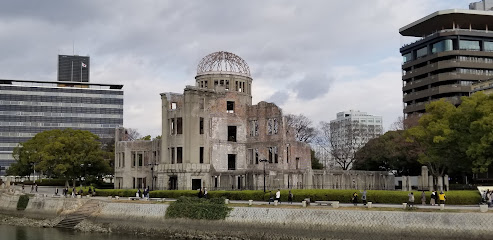
Hiroshima Orizuru Tower
0.1 km
Experience stunning views and rich history at Hiroshima Orizuru Tower, a symbol of resilience, peace, and beauty in the heart of Hiroshima.

Clock Tower of Peace
0.1 km
Explore the Clock Tower of Peace in Hiroshima, a symbol of resilience and hope, standing proud amidst a rich historical backdrop.
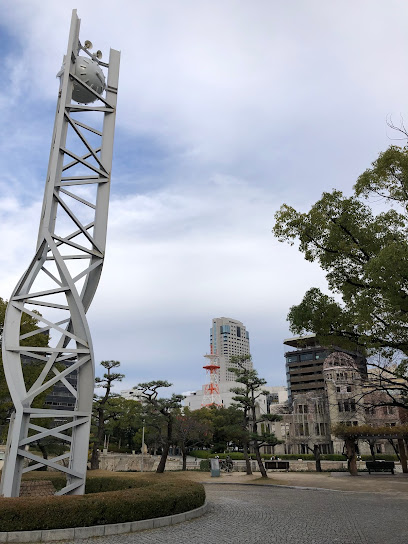
Hiroshima Atomic Bomb Hypocenter Monument
0.1 km
Visit the Hiroshima Atomic Bomb Hypocenter Monument to reflect on the impact of war and the enduring message of peace in Japan's historical landscape.
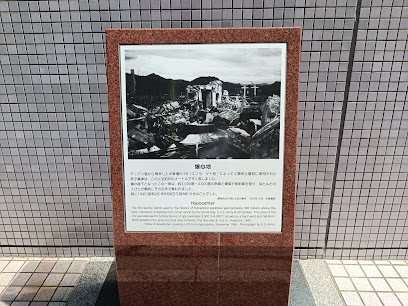
Aioi Bridge
0.1 km
Explore the iconic Aioi Bridge in Hiroshima, a stunning architectural landmark offering breathtaking views and rich history.
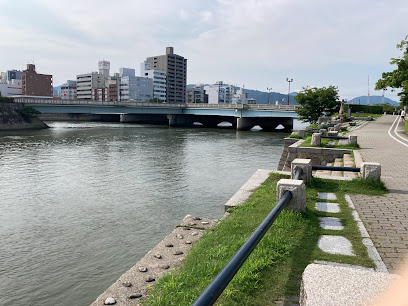
Motoyasu Bridge
0.2 km
Discover the charm of Motoyasu Bridge, a stunning landmark in Hiroshima that connects you to the city's rich history and breathtaking views.
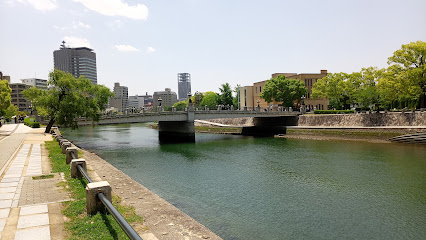
Children's Peace Monument
0.2 km
Visit the Children's Peace Monument in Hiroshima, a poignant symbol of resilience and a global message for peace and remembrance.
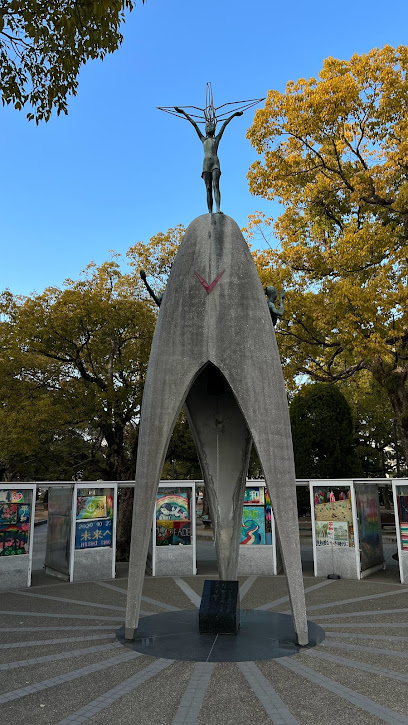
Atomic Bomb Memorial Burial Mound
0.2 km
Explore the profound history and serene beauty of the Atomic Bomb Memorial Burial Mound in Hiroshima, a poignant symbol of peace and remembrance.
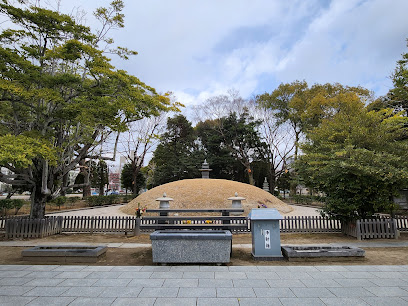
Hiroshima Peace Park Rest House
0.2 km
Discover peace and reflection at the Hiroshima Peace Park Rest House, a unique blend of café, exhibits, and souvenirs in a serene memorial park.
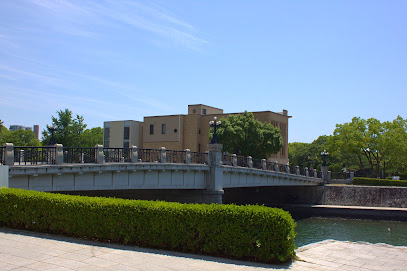
Sokoiko!
0.2 km
Explore Hiroshima with Sokoiko!, your trusted travel agency for unforgettable tours and experiences in this historic city.

HIROSHIMA GATE PARK
0.2 km
Explore Hiroshima Gate Park, a serene playground and vibrant tourist attraction offering lush greenery, fun activities, and cultural events in the heart of Hiroshima.
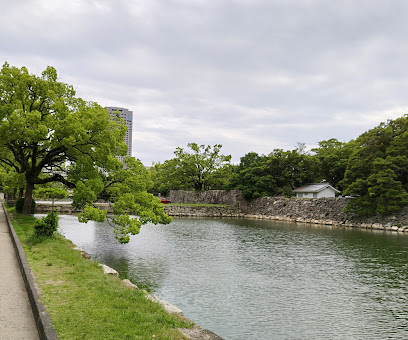
Korean Atomic Bomb Victims Cenotaph
0.2 km
Discover the Korean Atomic Bomb Victims Cenotaph in Hiroshima, a powerful memorial honoring the victims and promoting a message of peace and reconciliation.
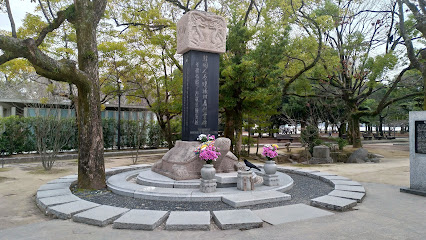
Traditional Japanese Archery Experience "SHA-RAKU"
0.2 km
Discover the serenity of Kyudo, the traditional Japanese archery experience, in the heart of Hiroshima, and connect with Japan's rich cultural heritage.
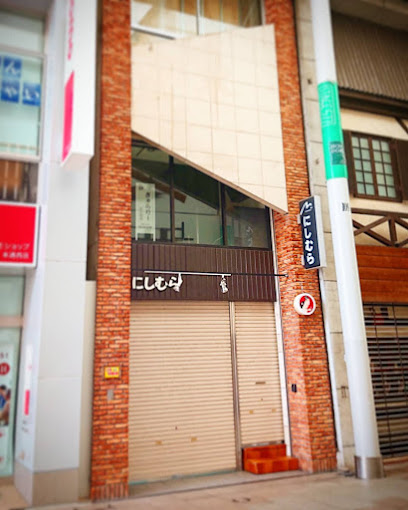
Hiroshima Prefectural Citizen's Culture Center
0.2 km
Discover the heart of Hiroshima's cultural scene at the Hiroshima Prefectural Citizen's Culture Center, where music and art unite.
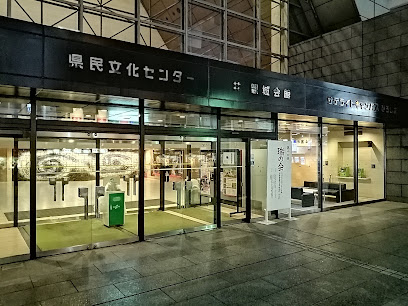
Essential places to dine
Hiroshima Shutendoji
0.2 km
Experience authentic Japanese cuisine at Hiroshima Shutendoji – where every meal tells a story through flavor.
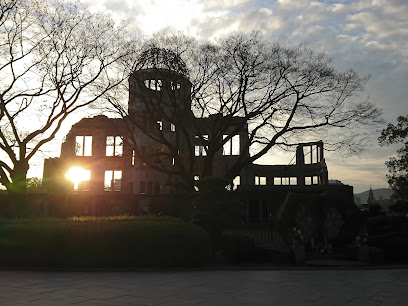
Nagataya
0.2 km
Discover the rich flavors of Hiroshima-style okonomiyaki at Nagataya – where tradition meets taste in every delicious bite.
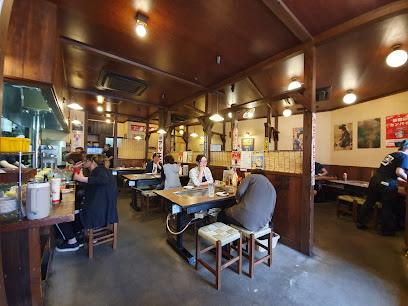
Caffè Ponte
0.2 km
Experience authentic Italian cuisine at Caffè Ponte in Hiroshima – where every meal is a celebration of flavor.

Ekohiiki
0.2 km
Experience the vibrant izakaya culture at Ekohiiki in Hiroshima—savor traditional Japanese cuisine with friends and family.
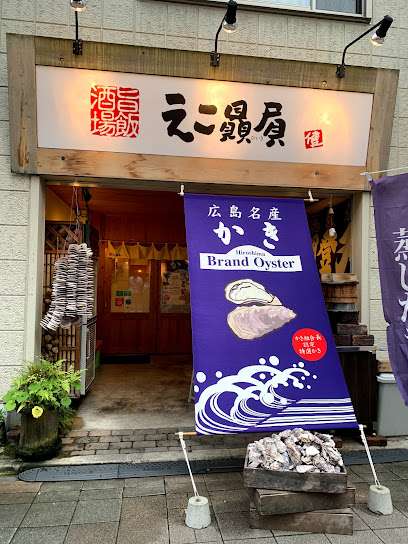
Aohige
0.2 km
Discover Aohige in Hiroshima - where succulent steaks meet authentic Teppanyaki experience in a warm and inviting atmosphere.
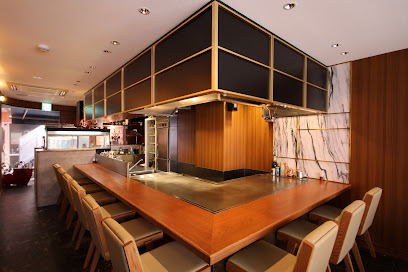
Tsukiakari
0.2 km
Experience authentic Japanese cuisine at Tsukiakari in Hiroshima, featuring kaiseki meals, tempura, seafood delights, and exquisite confectioneries.
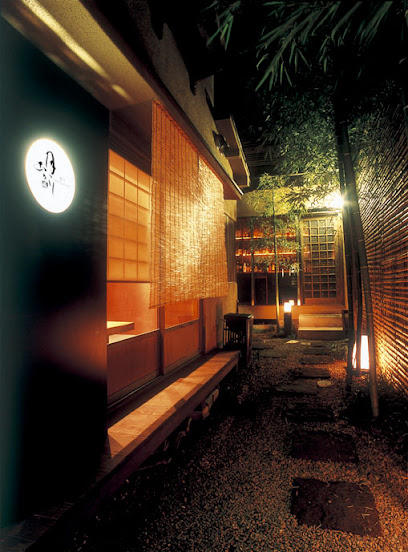
Tsuki Akari
0.2 km
Experience authentic Japanese cuisine at Tsuki Akari in Hiroshima – where tradition meets taste in every delightful bite.
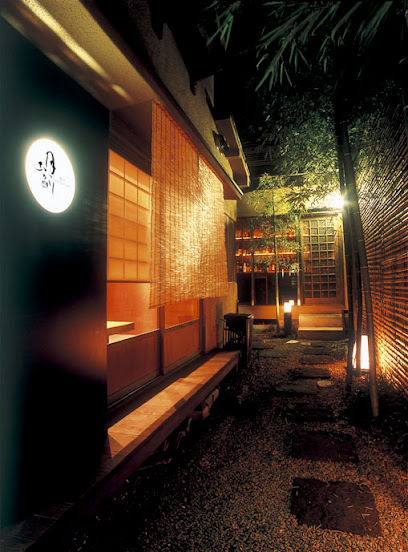
Nonta-sushi Kamiyacho
0.2 km
Experience authentic conveyor belt sushi at Nonta-sushi Kamiyacho in Hiroshima – where freshness meets tradition.
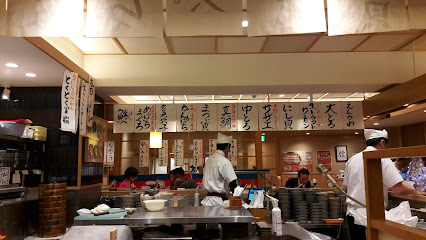
Okonomiyaki Teppan-yaki Momiji-Tei
0.3 km
Experience authentic Hiroshima-style okonomiyaki at Momiji-Tei - where every dish is a flavorful adventure.
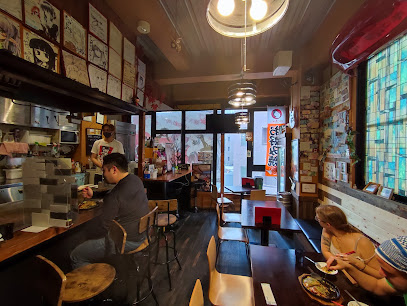
Japanese Restaurant Naniwa
0.4 km
Discover the exquisite flavors of teppanyaki at Japanese Restaurant Naniwa in Hiroshima - where dining meets artistry.
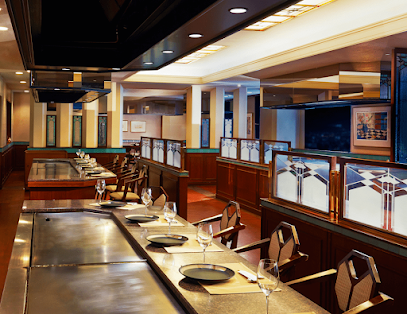
Kaki-goya Kaisenizakaya Toyomaru Suisan Hiroshima Hondori Branch
0.4 km
Savor authentic Japanese seafood and sushi at Kaki-goya Kaisenizakaya Toyomaru Suisan in Hiroshima's lively Hondori district.
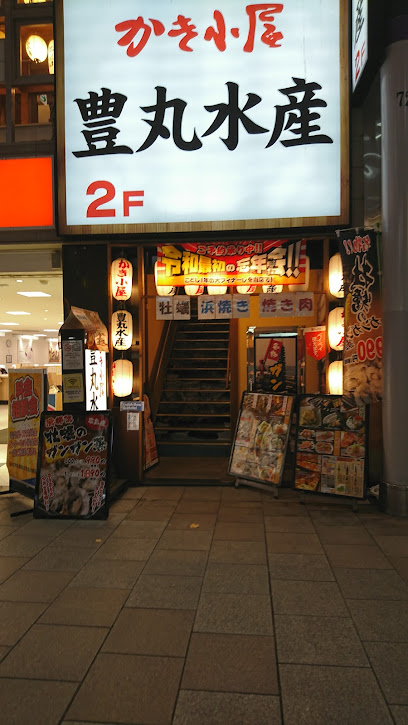
Okonomiyaki Mitsu
0.5 km
Experience the authentic flavors of Hiroshima at Okonomiyaki Mitsu – where traditional Japanese cuisine meets modern culinary artistry.
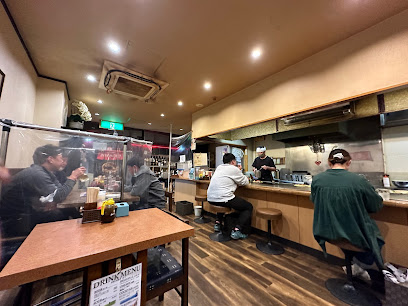
Ootoya Hiroshima Hondori Branch
0.5 km
Experience authentic Japanese cuisine at Ootoya Hiroshima Hondori Branch – a delightful blend of tradition and flavor awaits you.

KeMBY's Brew Pub
0.5 km
Experience the vibrant flavors at KeMBY's Brew Pub in Hiroshima – where delicious burgers meet craft beer in a lively atmosphere.
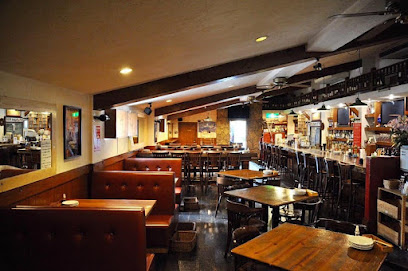
Parco della Pace
0.5 km
Experience authentic Italian pizza at Parco della Pace in Hiroshima – where every bite transports you straight to Italy!
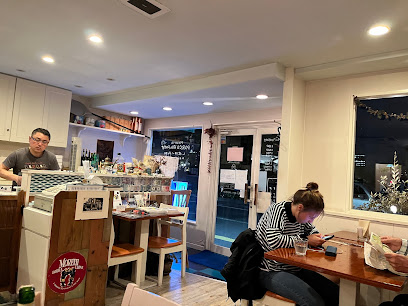
Markets, malls and hidden boutiques
Negozio souvenirs
0.2 km
Discover unique gifts and authentic memorabilia at Negozio Souvenirs in Hiroshima, capturing the city's rich history and culture.
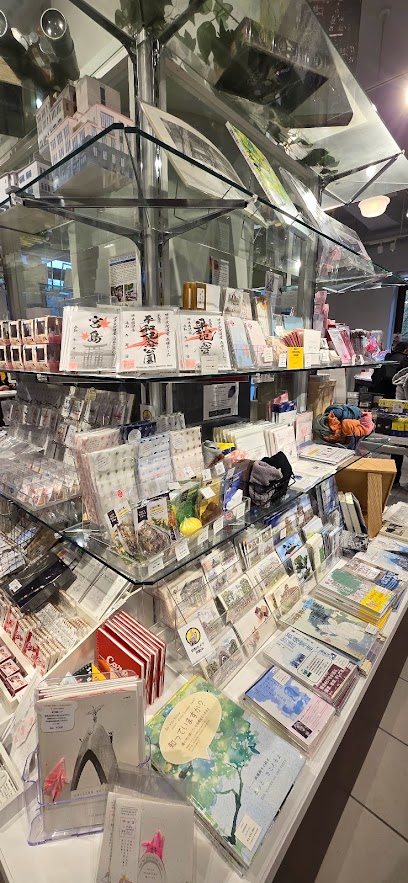
Yellow Submarine Hiroshima Shop
0.2 km
Explore a vibrant hobby haven in Hiroshima, where collectibles and creativity come together at Yellow Submarine Shop.
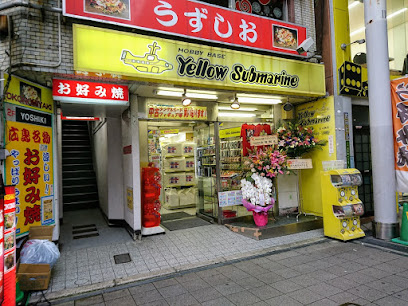
Animate Hiroshima
0.3 km
Explore the vibrant world of anime and manga at Animate Hiroshima, your ultimate destination for Japanese pop culture treasures.
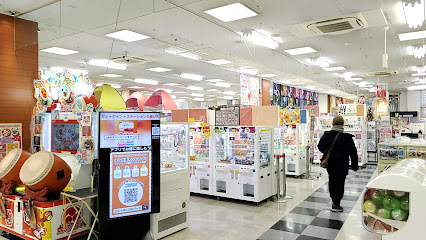
Sunmall
0.3 km
Explore Sunmall, Hiroshima's premier shopping destination offering a mix of local and international brands, delightful dining options, and cultural events.
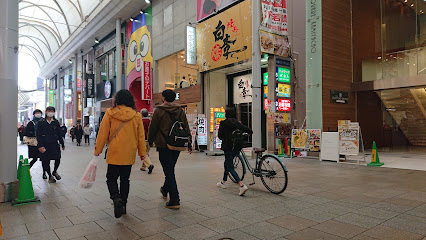
SOGO Hiroshima Store
0.3 km
Discover shopping bliss at SOGO Hiroshima Store, where fashion, food, and local treasures await in the heart of the city.

KASHOENブティック広島
0.4 km
Discover unique gifts and beauty treasures at KASHOEN Boutique in Hiroshima, where tradition meets modern elegance.
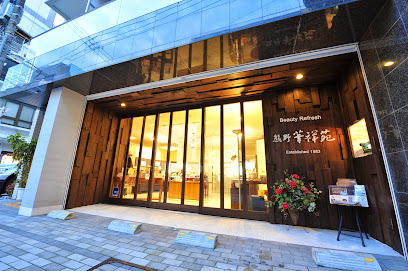
Seikatsu Saika
0.4 km
Discover the ultimate convenience store in Hiroshima, Seikatsu Saika, where local flavors meet your daily needs in one perfect location.

Nagasakiya
0.4 km
Discover unique souvenirs and local treasures at Nagasakiya, a charming store in Hiroshima's Hondori district, perfect for travelers seeking authentic gifts.
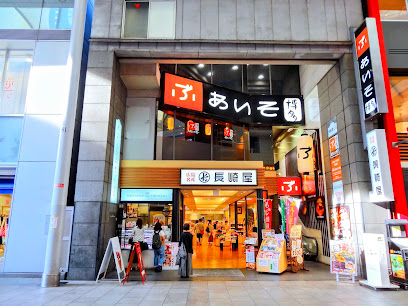
BOOKOFF SUPER BAZAAR Hiroshima Otemachi Store
0.4 km
Explore the eclectic world of used books, DVDs, and collectibles at Hiroshima's BOOKOFF SUPER BAZAAR, where every visit is a new adventure.
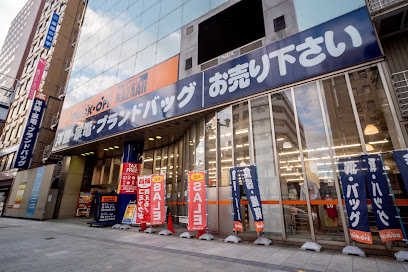
Sanrio Gift Gate
0.5 km
Explore the magical world of Sanrio Gift Gate in Hiroshima, where adorable characters and unique souvenirs await every visitor.
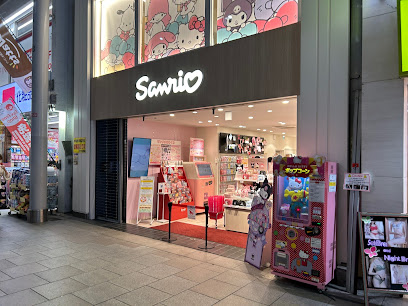
GetHiroshima
0.6 km
Explore Hiroshima like a local with GetHiroshima, your essential guide for news, tips, and hidden gems in the city.

BIG TIME Hiroshima
0.6 km
Explore BIG TIME Hiroshima – a vintage clothing store where fashion history comes alive with unique finds and timeless treasures.
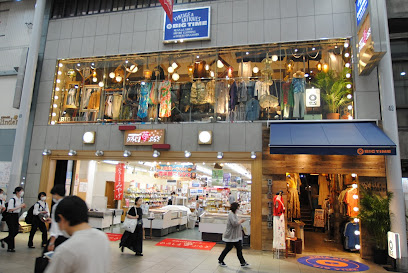
Yume Plaza
0.6 km
Explore Yume Plaza in Hiroshima, where unique souvenirs and local delicacies come together to create unforgettable memories of Japan.
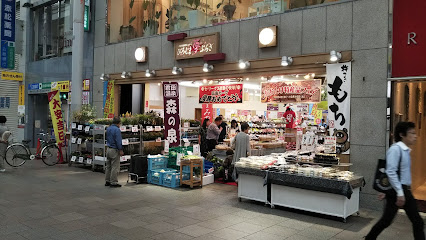
ドリームマーケット広島店
0.6 km
Experience the vibrant shopping scene at Dream Market Hiroshima, where unique finds and unbeatable prices await in the heart of the city.

Anaya
0.7 km
Immerse yourself in the vibrant gaming culture at Anaya, Hiroshima's premier game store with an extensive selection of games and collectibles.

Essential bars & hidden hideouts
Uluru
0.4 km
Discover the majestic beauty and cultural significance of Uluru, a UNESCO World Heritage Site in the heart of Australia, perfect for nature lovers and adventurers.

Rihga Top
0.4 km
Discover the exquisite dining experience at Rihga Top, where traditional Japanese flavors meet international culinary artistry in the heart of Hiroshima.
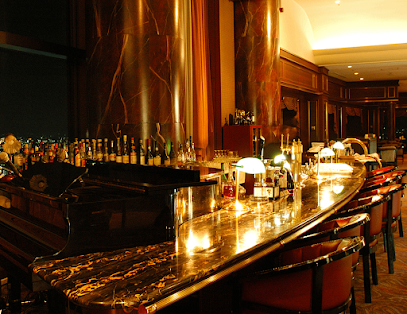
hangout
0.4 km
Experience the best of Hiroshima's craft beer scene at Hangout, where delicious burgers meet a diverse selection of brews.
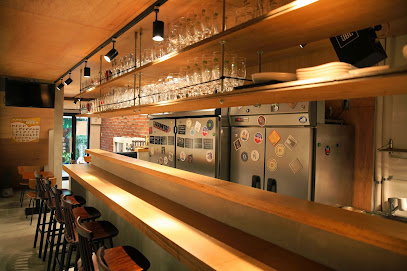
hangout(TAROS BREWING Beer Pub)
0.4 km
Discover a lively beer hall in Hiroshima offering a delightful selection of local brews and mouthwatering hamburgers in a vibrant atmosphere.
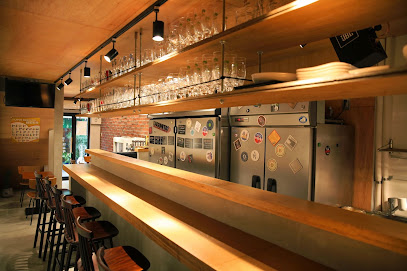
The Bar Top Note Ⅲ
0.5 km
Experience the lively atmosphere and exquisite drink selection at The Bar Top Note Ⅲ in Hiroshima's vibrant nightlife hub.

Hiroshima Hop's
0.5 km
Experience the vibrant flavors of Hiroshima at Hiroshima Hop's, where local beers and traditional izakaya dishes create unforgettable memories.
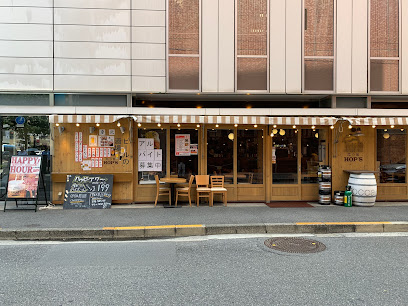
Bar the Lounge Top Note (ザ ラウンジ トップノート 別館)
0.5 km
Discover the art of mixology at Bar the Lounge Top Note, where local flavors meet cocktail elegance in the heart of Hiroshima.

Lobby Side Bar Hiroshima
0.5 km
Discover the charm of Lobby Side Bar Hiroshima, where exquisite drinks and a cozy ambiance create the perfect evening escape.

Lemon Stand Hiroshima (Lemon sour, Craft beer, Raw oyster, Curry, Natural wine)
0.6 km
Savor the best of Hiroshima at Lemon Stand, where fresh oysters meet craft beer and natural wines in a cozy, inviting atmosphere.
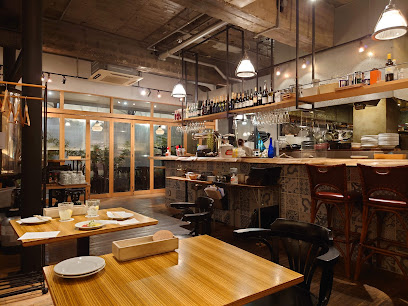
PUB and BAR PIC
0.6 km
Discover the vibrant nightlife of Hiroshima at PUB and BAR PIC, where great drinks and a lively atmosphere await you.

Mac Bar
0.7 km
Discover the charm of Hiroshima at Mac Bar, where a cozy atmosphere meets an extensive drink selection in the heart of Japan.
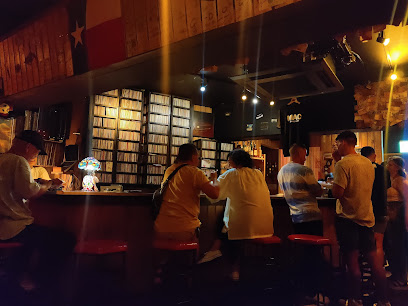
Bar Corton
0.7 km
Discover Bar Corton in Hiroshima for an unforgettable night filled with lively atmosphere and exceptional drinks.

SHACK
0.7 km
Discover the ultimate grilling experience at SHACK, where Hiroshima's flavors come alive in a vibrant and inviting atmosphere.
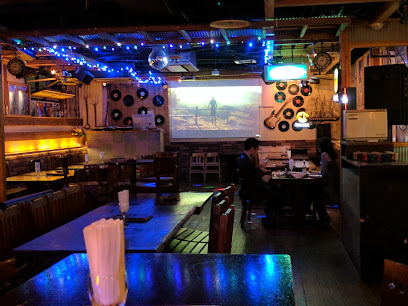
The Smith Lab
0.7 km
Experience the vibrant nightlife of Hiroshima at The Smith Lab, a premier bar offering unique cocktails and a lively atmosphere.
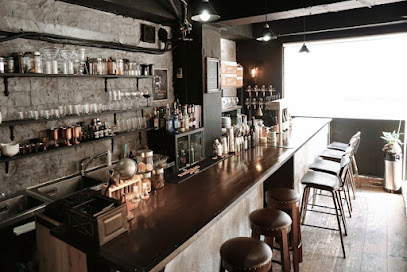
HACHIRO'S BAR AND CAFE
0.8 km
Discover Hachiro's Bar and Cafe - a cozy spot in Hiroshima blending traditional vibes with modern flavors, perfect for relaxation and local tastes.




